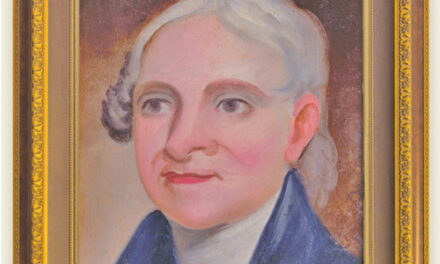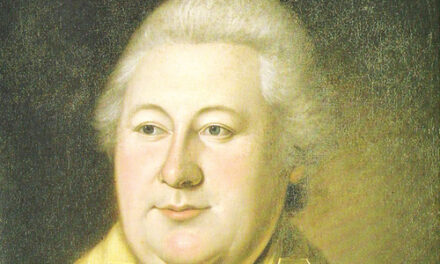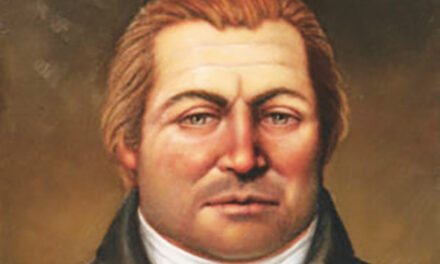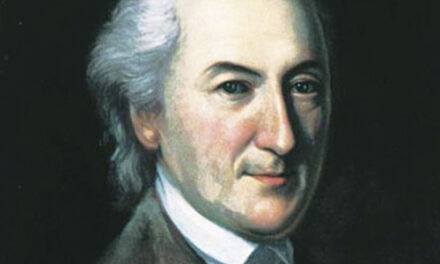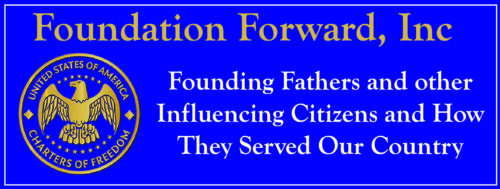
By Dr. David Streater
This vignette is an educational moment in American history. It is about those who made a difference during the Revolutionary War era and how they served our country.
Squire and Sarah Boone came to America from England for religious freedom. Their son, Daniel, was born in Pennsylvania on November 2, 1734, and grew up in the Oley Township of Philadelphia. Daniel received a basic education while exploring the local backwoods. These experiences honed the skills that would serve him well as an explorer and a soldier.
 Due to religious differences with other parishioners, the Boones moved to North Carolina when Daniel was about 15. During his youth, Daniel discovered that being a long hunter was his forté. Over the years, he went on adventures that had mixed outcomes.
Due to religious differences with other parishioners, the Boones moved to North Carolina when Daniel was about 15. During his youth, Daniel discovered that being a long hunter was his forté. Over the years, he went on adventures that had mixed outcomes.
Though others had preceded Boone in exploring the territory of Kentucky, he was the first to find a shortcut using the Cumberland Gap. In the early 1770s, Boone led others to Kentucky on a hunting expedition. It was a fruitful expedition in terms of documenting much about the regions of Kentucky and Tennessee. In 1773, Boone led settlers to Kentucky. During the trip, the group was attacked by Indians. “Two of the party, including Boone’s son James, were captured, tortured, and murdered, whereupon the survivors turned back.”
In 1775, Boone was commissioned as a captain in the Virginia militia due to his frontier skills and leadership abilities. The Transylvania Purchase of 1775 authorized Boone to explore the Cumberland Gap in Kentucky, and a small base camp became known as Boonesborough. Settlers soon followed to escape the violence of the Revolutionary War. Unfortunately, battles continued in the new land; as Native Americans had sold or given away their land, violent conflicts emerged between them and colonists over the issue of establishing settlements.
An unexpected event at Boonesborough happened on April 24, 1777. Two men who were getting their horses were assaulted just outside the garrison gate by several Shawnees. One colonist was killed and scalped, while the other escaped. Following this, several settlers, including Boone, encountered 50 Shawnee. During this clash, Boone was shot in the foot. As his attacker was about to give Boone a last blow, the assailant was shot and killed by another colonist.
In January 1778, Boone led an expedition of 30 men from Boonesborough to find salt for curing food. While hunting at Licking River, Boone was captured and taken to Shawnee Chief Blackfish. Instead of fighting back, Boone and his men surrendered to the Shawnee on February 8, 1778.
Taken to Chillicothe, Ohio, they were made to run the Shawnee’s gauntlet. Boone and his group, who demonstrated bravery and endurance, were adopted by the tribe. Boone and the others gained the Indians’ confidence by taking on assigned duties. Boone was to repair the Shawnees’ muskets. Unbeknownst to his men, Boone sabotaged the rifles. During this time, Boone could not tell his group that the repairs were a way to defeat the Shawnee and save Boonesborough.
While with a hunting party of his captors, Boone escaped and returned to Boonesborough and learned his family had returned to North Carolina, believing he was dead. Soon thereafter, Boone’s life would change as he could have never imagined.
Though Boone’s actions saved Boonesborough and its residents, he was charged with treason. Colonel Callaway and Captain Logan filed the charges. They claimed Boone acted illegally by surrendering and plotting with the Indians and British. The officers also envied his increasing fame, which overshadowed them.
A court-martial would revoke Boone’s commission and ruin his reputation. Military officers were the judge and jurors. Callaway presented the charges, and Boone defended himself. The court-martial quickly ended with Boone being acquitted because of his testimony about his strategy while in captivity. Because of Boone’s leadership and tactical actions, the court promoted him to a major.
Boone’s popularity came from various media sources. Boone, a noble patriotic frontiersman, was vital in forming America. Over the years, Boone was also a sage, statesman, and sheriff. Additionally, Boone was a soldier reaching the rank of colonel. Boone died at Defiance, MO, on September 26, 1820; unfortunately, his final resting site is unsure.
Daniel Boone has many landmarks and towns named in his honor, most notably Boone, NC.
Please visit your Charters of Freedom setting at the Conover City Park, Conover, NC, Education Park, Valdese, NC, and the Historic Courthouse, Morganton, NC. A Charters of Freedom setting consists of the Declaration of Independence, the United States Constitution, the Bill of Rights, and the Civil Rights Amendments. Settings are on permanent display akin to the Charters of Freedom in the National Archives, Washington, DC. Visit our website (FoundationForward.com) to learn more about our settings. Vance and Mary Jo Patterson are the benefactors of Foundation Forward, a 501(c)(3) education non-profit that makes all Charter of Freedom settings possible. Teachers may contact Dr. David Streater, education director ([email protected]), for information and complementary student education materials to enhance experiential field trips to Charter of Freedom settings.


